With the SUV market in full swing, the idea of offering a car of this type at a reasonable price and with striking aesthetics seems a strategic move that should serve to raise awareness of the brand in Europe, where it has long wandered among the complete unknown and those who are recognized as "lowly" brands.
The Tivoli aims at the fashionable sector, the B-SUV, and does so with a combination of striking and different aesthetics, a lot of standard equipment in all sections, and a price clearly lower than its rivals. But does this take a toll in any way? We've spent a week with it to find out, so let's tell you about it.
Design

Aesthetically, you can't say that SsangYong has ever been conservative. It has the dubious honour of having the Rodius in its range, but beyond that "strange and hard to see" MPV, there were the aggressive and risky Action, or the current Korando.
The Tivoli goes one step further. It represents the first in a series of products that will use the same aesthetic keys to generate a common brand image. The design starts at the side profile, where a large area of "smooth" sheet metal is used to create an image of "presence".
On this side evolves a broken style line, which marks the front wheel arch, and is cut for a second line that frames the rear wheel arch, creating a hip (in the photos, in full sun at noon and white color hard to appreciate, yes, but it's there). The use of a black A-pillar roof and the two-tone finish play with the very thick C-pillar to generate a "floating roof" idea that reminds us of the Suzuki Swift, and that is graceful and personal.
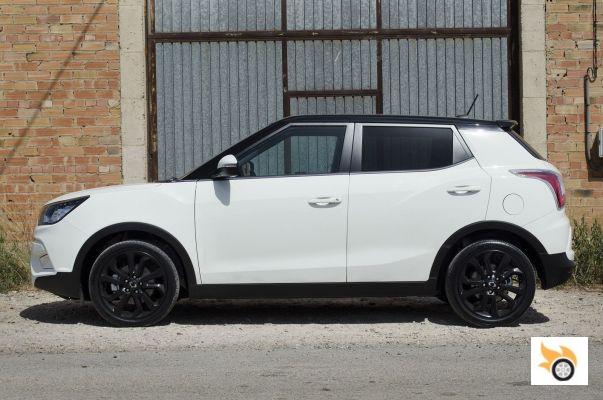
The front look and rear design also play it safe. The nose is very square, solid, and avoids copying ideas to anyone, while the rear plays with more elaborate pilots than ever in a SsangYong. The finish (consistent distance between panels, radius of curvature of sheet metal) is quite good, although the apex of the front door frame is too abrupt.
In any case, the car, especially in the photo, gives the impression of working well. The problem is that, when you see it live, you're left with the impression that it's a very tall car for its width. It's one of the best SsangYong has done, but even so it's not difficult to find critical voices on the street (in my urbanization I heard several criticisms about it, the best one from a neighbor who shouted from the other side "what an ugly car they've left you this week...").
Certainly, carrying a badge like the SsangYong one adds a dimension to this. There are people who, with the car parked at a gas station in the middle of a return trip, approached me curious to see what the hell that car was. Some asked me about the make, others about the model. Some said it was cool, others were disappointed to learn that it was "a Chinese brand, isn't it? Of course, I had to explain to them that no, it's a Korean car, like a Hyundai or a Kia, but it's clear that the same body with Audi logo would have another more homogeneous and positive reception.
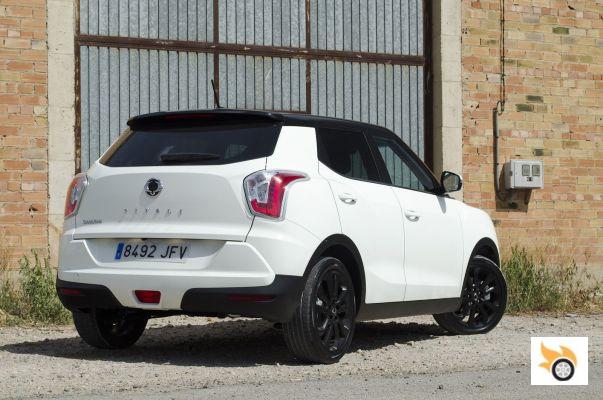
Cabin
The external aesthetics may be debatable, but the cabin is usually easier to assess objectively. The space is the first thing that catches the eye. Being framed in the B-segment of SUVs, the Tivoli is tremendously generous in its five seats, being the king of the category (at least until we test the HR-V Honda).
Sitting in the front seats is striking: You sit tall and upright, like in a traditional SUV. The materials on the steering wheel and dashboard make you forget you're in a low-cost B-SUV for a moment. But a few things quickly become apparent.
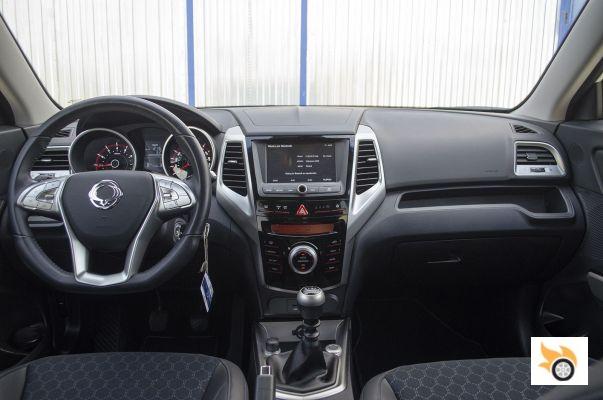
The first is a problem endemic to all the SsangYongs we tested: The gear lever spins madly. I'm referring to the knob, which, without unscrewing, goes round and round. I found it when I went to pick up the car turned ninety degrees. After putting it back "as it should go", it turned again due to use. It may seem like a silly detail, but on a new car it's not something you're likely to find.
Then there are other issues, such as the fact that the driver's window lifter is only automatic when going down, but not when going up, or the ergonomics of certain controls. The car integrates a system of several driving profiles, with a different steering response for each of them. Where do you change that driving profile? It takes you a while to find it... it's to the right of the "warning" button, which is easier for the passenger to activate than the driver.
The partial mileage counter is also reset to zero from the center console where there's another button to change the on-board computer menus between the clocks. The dual-zone climate control (good for it) also has some unnatural controls, with a big roulette that in automatic mode is useless (it only controls the ventilation speed), while a "memory" mode that I couldn't figure out what it was for.
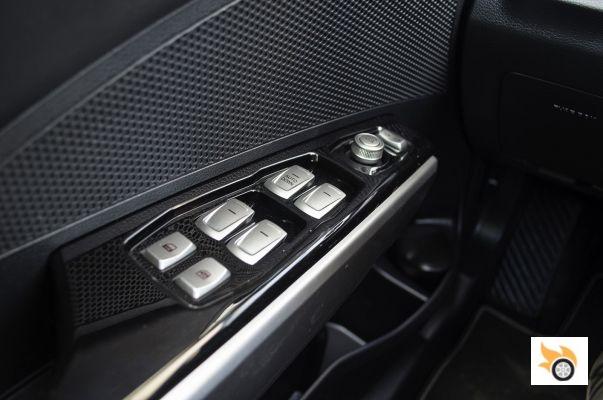
The good thing is that it's very easy to reach a good driving position. There is room for a very complete infotainment system with TomTom navigation, Bluetooth audio connectivity (although the menus could be better resolved) and rear view camera.
The rear seats are very generous, and the boot is very spacious for the segment and price range in which the Tivoli moves (423 litres). The mixed leather and cloth upholstery of the test model was pleasant and not at all oppressively warm.
The gauge cluster is simple, but even includes engine coolant temperature. The on-board computer has some strange gaps (it shows the tire pressure "live" but it does it in PSI and not in bars), and it has an integrated instantaneous fuel consumption indicator. It doesn't have a rapturous design on the dials, but at least they're clearly visible.
Then there's the light on indicator. As it turns out, it never goes off. As long as the daytime running lights are on (which is always the case, at least as far as I know, with this car), this light is on. So it's absolutely useless, as it doesn't help to remind you that you've left the lights on after exiting a tunnel (it has automatic headlights, but it could also help you to notice if they came on by themselves when you entered the tunnel or you have to activate them by hand). A lot of these things I'm telling you are silly, but when you add them all up, one by one, one wonders if there wasn't a Korean guy racking up the miles during the last stages of development of this car to notice all this and fix it. It's as if SsangYong is always on the verge of closing that gap that separates it from every other brand's standard of finish, but no matter how much it closes that gap, it's always a hair behind. And it's not about money, because fixing what I'm talking about isn't so much a matter of cost as it is a matter of will.
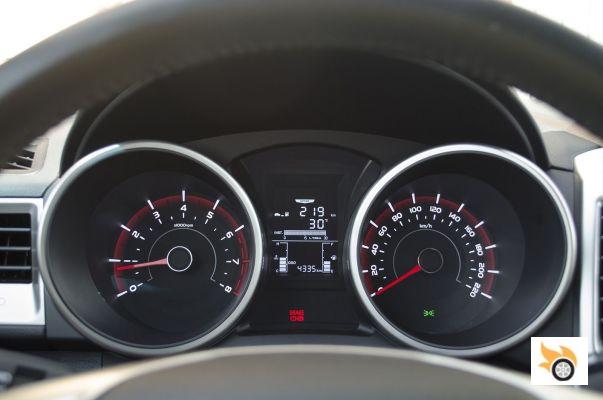
Apart from all these criticisms, I'll remember the Renault Captur, the best-seller in the category, to tell you that when you compare materials and fittings between the French model and the Tivoli, it's not so clear that the Korean model is worse at all. In fact, many of the SsangYong's plastics and fittings are better than the Renault's, although the Renault doesn't have the faults we've cited above.
Technical
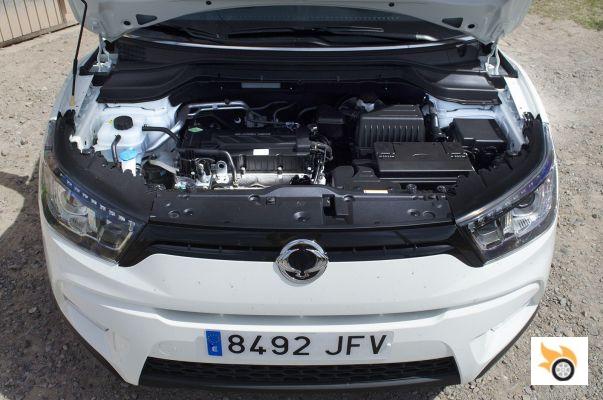
Many things can be said about this SsangYong, but the truth is that the petrol version, which is the one we tested, sports a direct petrol injection engine. The G16 has 1.6 litres of displacement and offers 128 hp at 6,000 rpm, with a maximum torque of 160 Nm (its big drawback) at 4,600 rpm.
Although you can order the Tivoli with automatic transmission and all-wheel drive, our unit was specified with the most logical and most demanded option for our market: front-wheel drive and six-speed manual transmission.
The chassis is really stiff, although SsangYong has yet to demonstrate the stability of their cabins in EuroNCAP, where there is no data from current models of the firm to compare. The front suspension is a traditional McPherson strut, while the rear suspension is a torsion beam-wheel suspension.
The steering assistance is electric, there is obviously room for ESP, ABS and all the traditional driving aids, which are, in fact, already mandatory in our market.
How to drive
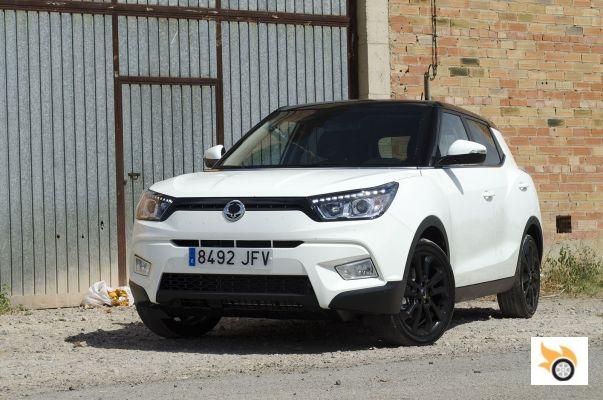
The big question is whether it drives like its rivals, or does SsangYong still have some way to go to match it. And I'll save you the wait: no, it doesn't drive like its rivals.
As soon as you start doing the first few miles around town, you notice that the steering has a really strange feel to it, with a central dead centre from which you still get no response from the front wheels when you shift a few degrees. You get the feeling that SsangYong's engineers have wanted to avoid steering wheel rim vibrations at all costs and have mounted the entire steering system on overly elastic bearings that eliminate precision and delay reaction time in those first few degrees of steering wheel turn before the front wheels do anything.
Even with the "sport" program (yes, the Tivoli has a "sport" program, next we'll see Rajoy in Bermuda shorts), with the assistance stiffened, the problem persists, which is why I point to bearings and springy blocks as the surest problem for this bad feeling.
The gear lever feels strange. The gear interlocks are good, as they go in well, with good feel, no rubbery or mushy feel that we do see in some European rivals (Peugeot, Renault, Fiat, I'm not looking at anyone), but it's the uneven spacing of the gears that is a problem. The longitudinal line where first and second meet is very close to their parallel of third and fourth, but the distance between third and fourth and the parallel of fifth and sixth is much greater. The result is that you can err between second and fourth or first and third with extreme ease, while it feels weird to reach the top two gears.
And then there are the brakes. The Korean tuner must have liked the Megane's "good braking" advert, because when he sized and calibrated the brake servo he must have decided to fit a truck brake. This explains why, when you touch the middle pedal, it goes down with astonishing speed. It takes some getting used to so as not to bring the pedal down too brutally. As it used to happen in VAG (and still happens in some models) this gives the false sensation of "safety", of a lot of braking power, but then, when you demand the braking circuit you realize that these are sensations, and it's not really a car that brakes in a spectacular way, but that you can't manage braking well.
Other marked drawbacks are the cabin noise, with a very present and resonant engine. The car is clearly louder than its rivals, and will require you to use the power of the audio system to compensate, or raise your voice to talk to the other passengers.
The engine, on the other hand, is surprisingly good in terms of fuel consumption, with an average of seven litres per 100 kilometres (it's 6.6, so it's a success), but it's lacking "down low". With so little torque and placed so high in the lap counter, you have to play with the not so graceful gearbox to keep it in the upper part and to move with ease the 1,270 kilos (it is light) that weighs this Tivoli. So, it is not a sprinter, far from it, with a 0 to 100 that we did not get under 12 seconds long (SsangYong does not offer official homologated figure in this regard) and a 80-120 that also timed in ... 12 seconds! Add the two values together and you get 24 seconds, which in our measurement system means the highest zero of all time in performance. With 12 seconds to go from 80 to 120, preparing for an overtake takes time and skill. With the diesel engine now arriving in dealerships, which will have more torque, things may improve on this front.
I will point out, as a final gripe, a pronounced sensitivity to side wind. True, the week of testing was marked by very strong gusts of wind, but I had occasion to quickly switch cars, from the Tivoli to my Abarth 500 and then to my wife's Honda Civic, and where the Tivoli "moved" in the wind, the other two cars seemed to ignore it. Stuff with the height and "flat" side surface of the Korean car.
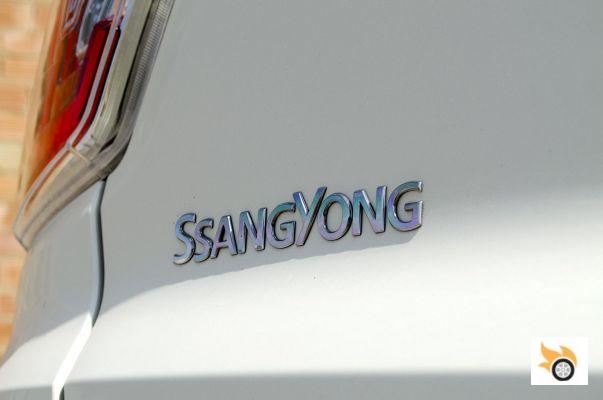
But then, how bad is the Tivoli to drive? Well, it's not bad. I'll tell you that we're so used to almost every car being "good" these days that it's surprising to find a model that has faults as easy to list as this Tivoli. It gives, honestly, the feeling that its final tuning phase, those last six months of road testing that serve to fine-tune these details, were overlooked, and there was a way to go to fine-tune the shot with it.
There are good things. The feel of the suspension, for example, is spot on. Although the car pitches and sways markedly (it lacks a bit of anti-dive geometry in the front axle and a hair of stabilizer, although I understand that the stabilizer is so to prevent the car from being a "pothole follower"), the "wheel to wheel" tuning is more than decent. It turns out to be a neutral car, tending to understeer when things get complicated. It easily marks frank supports, without the damping lacks friction (it doesn't flank and reaches a concise support, once the car is balanced), and the springs are not scarce in their setting. If anything, the suspension can be a little dry, which is typical of SUVs, which have to compensate for their high centre of gravity compared to a conventional car with suspension settings that are always harder than a "normal" car. "You have to suffer to be able to show off an SUV.
Conclusions
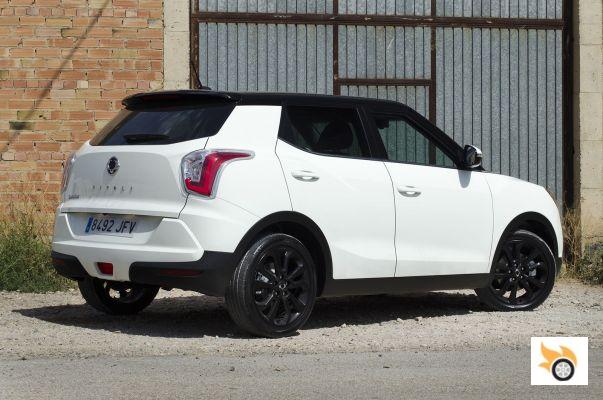
At this point, and with so much to criticize, it seems obvious that it is not a car that I would recommend. But here comes the price-equipment factor, the point where the SsangYong Tivoli is really strong, and where it can win buyers.
Let's consider that the typical customer of the Tivoli has to be someone who is clear that he wants an SUV, has a budget of about 15,000-18,000€, and the aesthetics of the Tivoli seems attractive. Here the Korean model offers two things to its rivals: the best price-equipment ratio on the market, and the largest interior space in the segment, both in the rear seats and in the trunk.
These are two factors that tend to work very well on a commercial level, as they are two things that salespeople can easily justify: "Look at the boot, how big it is" and "for that price the Tivoli is fully equipped, it even has a touchscreen navigator".
The question we, as motoring enthusiasts, have to ask ourselves at this point is whether the Tivoli's drawbacks are too great to cover up this economic and space advantage. It is clear that if the customer who is looking at the car is going to use it mainly in the city, many of the dynamic drawbacks will not enervate him, and other drawbacks (gearshift travel, brake pedal feel or steering) one can get used to. So if that customer doesn't care about those issues, he can use the price difference to his advantage.
However, if you like to drive a little bit, there are cars with better road performance. Undoubtedly, for the same budget you will get a less equipped car, with less gadgets and less space in the rear seats, but you will have a car with better manners.
And then there's another question, which is the market. I understand that SUVs are "aspirational" products. A brand manager explained to me not long ago that the reason why brands are interested in SUVs is that they are cars with a much higher commercial margin than traditional cars. People buy them on a whim, and that's why they can be priced higher. But don't be fooled, that means that for the same price of this Tivoli (as equipped, the test car costs 18,500€), you can buy a better car (you can buy the entry-level versions of the Golf, Leon or many others).
This time it's clear to me, I wouldn't buy a Tivoli...
























